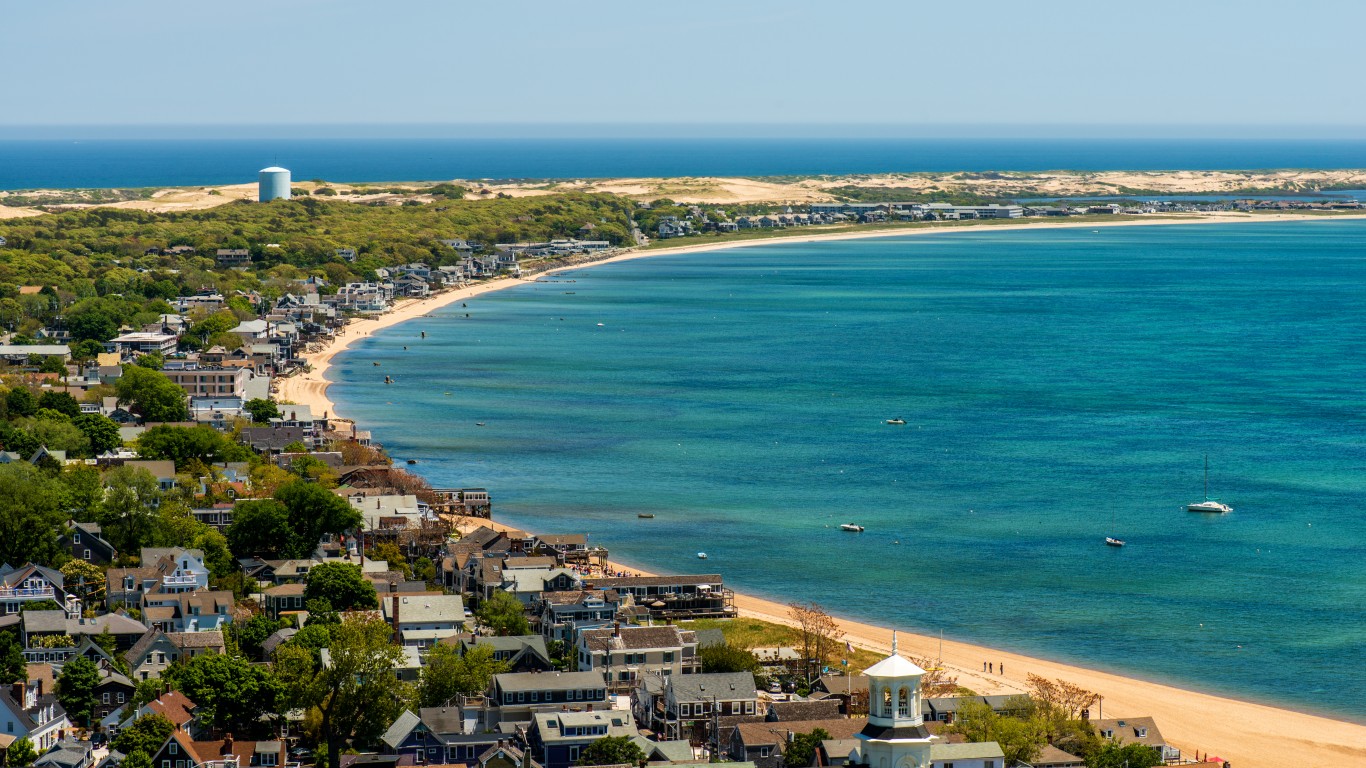Economy
This Is the City With the Fewest People Below the Poverty Line

Published:

The federal government does not have a single definition for the “poverty line.” One way it is calculated is by the number of household members. One example is that the poverty line is $12,760 for a household with one person. The figure rises to $26,200 for a household of four. On a percentage basis, the percentage of the population was 9.2% nationwide.
The government also has what it calls a supplemental poverty measure: “which extends the official poverty measure by taking account of many of the government programs designed to assist low-income families and individuals that are not included in the official poverty measure.”
To determine the metro with the lowest poverty rate in the nation, 24/7 Wall St. reviewed one-year estimates of the percentage of people who live below the poverty line in each metropolitan area from the U.S. Census Bureau’s 2019 American Community Survey (ACS). For reference, the Department of Health and Human services sets the official poverty threshold at an annual income of no more than approximately $26,000 for a family of four.
As we worked to determine which metro had the fewest people below the poverty line, we found that metro areas with the lowest poverty can be found all across the country. While poverty rates do not correspond perfectly with median incomes, counties with higher poverty rates tend to have lower incomes. They also tend to have higher shares of residents receiving Supplemental Nutrition Assistance Program benefits, formerly known as food stamps.
The city with the fewest people below the poverty line is Barnstable Town, Massachusetts. Here are some details:
In determining the metro with the lowest poverty rate, 24/7 Wall St. used the 384 metropolitan statistical areas as delineated by the U.S. Office of Management and Budget and used by the Census Bureau as our definition of metros. Metros were excluded if the sampling error associated with a metro’s data was deemed too high.
The sampling error was defined as too high if the coefficient of variation (a statistical assessment of how reliable an estimate is) for a metro’s poverty rate was above 15% and greater than two standard deviations above the mean coefficient of variation for all metros’ poverty rates. We similarly excluded metros that had a sampling error too high for their population for which poverty status had been determined, using the same definition.
The remaining 370 metros were ranked based on their poverty rates. Additional information on the number of people living below the poverty line, median household income and the share of households receiving SNAP benefits are also one-year estimates from the 2019 ACS.
Click here to see all the metros with the fewest people living below the poverty line.
The average American spends $17,274 on debit cards a year, and it’s a HUGE mistake. First, debit cards don’t have the same fraud protections as credit cards. Once your money is gone, it’s gone. But more importantly you can actually get something back from this spending every time you swipe.
Issuers are handing out wild bonuses right now. With some you can earn up to 5% back on every purchase. That’s like getting a 5% discount on everything you buy!
Our top pick is kind of hard to imagine. Not only does it pay up to 5% back, it also includes a $200 cash back reward in the first six months, a 0% intro APR, and…. $0 annual fee. It’s quite literally free money for any one that uses a card regularly. Click here to learn more!
Flywheel Publishing has partnered with CardRatings to provide coverage of credit card products. Flywheel Publishing and CardRatings may receive a commission from card issuers.
Thank you for reading! Have some feedback for us?
Contact the 24/7 Wall St. editorial team.